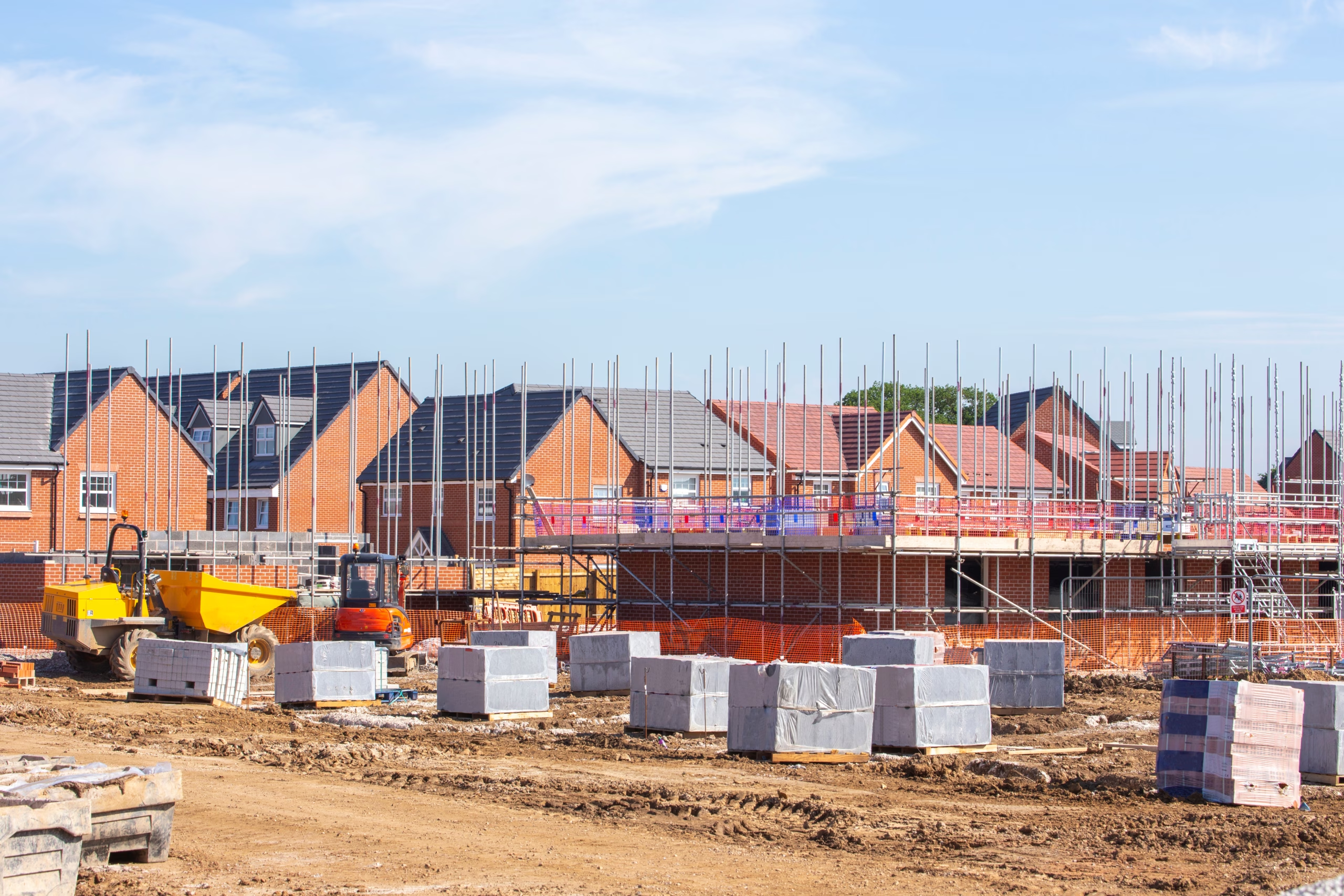As we make our way into 2025, the construction industry is already seeing some big changes. New technologies, higher demand for sustainable buildings and economic changes will all play a part in the construction industry’s future. With rising costs and labour challenges, companies will need to flex to find ways to stay efficient and keep projects on track.
From eco-friendly designs to tech tools that make building faster and easier, here’s a look at the top trends we’re expecting to see in construction this year.
- Workforce gap
We’ve seen a 20% decline in skilled workers since the 2008 financial crisis, and this will only worsen in the next decade, with an estimated 30% of current builders set to retire. This decline is likely due to a lack of recruitment efforts, along with the loss of labour following Brexit and COVID-19.
According to the Construction Skills Network (CSN) report, 225,000 new builders are needed by 2027 to meet demand. To prepare for these challenges, construction companies must use new digital tools to improve efficiency and reduce reliance on manual labour – which in turn – should appeal to younger, tech-focused workers.
It’s also important to offer training, mentorship and upskilling programmes to help workers develop the skills needed to meet the requirements of the evolving roles within the industry.
What’s more, recruitment needs to go beyond the construction industry and focus on diversity by encouraging underrepresented groups to join the field, which will help to fill the talent gap. - Economic upturn of 1.5% growth projection
Although there have been ups and downs in the economy recently, experts predict that construction activity will slowly pick up pace in the coming years. The Bank of England expects the UK economy to grow by 1.5% this year, mainly due to higher government spending and increased consumer spending.
This growth is likely to have a positive effect on areas of construction that directly serve private housing, retail spaces and leisure facilities. As more people spend money and the government invests in infrastructure, the demand for new homes, shopping centres and entertainment venues will rise. - Government initiatives and infrastructure investment
The Labour government has set out a plan to change up the public services and its infrastructure which brings construction to the core of their strategy. These large-scale initiatives aim to tackle the housing crisis, modernise transport networks and improve regional connectivity.
Upcoming government-led construction projects:
– develop new towns
– build 1.5 million new homes by 2029
– build a third runway at Heathrow Airport
– expand infrastructure within the Oxford-Cambridge Arc
With strong government backing, the construction industry is set for a period of sustained growth and transformation in 2025 and onwards. - Simplifying the homebuilding process
To address the growing need for more housing, the government has introduced faster planning rules to speed up the construction of homes, industrial buildings and infrastructure. These changes include setting higher building targets for local councils and allowing some development on greenbelt land.
While the construction industry has some concerns, such as rising costs and the need for more funding for affordable homes, the reforms are ultimately a step in the right direction. With these changes, the government is creating opportunities to improve housing development and deal with the housing crisis more effectively. - Overcoming supply chain and material price challenges
The construction industry is still facing changes in material prices. In December last year, the overall cost of materials dropped slightly by 0.1% compared to 2023. However, some materials have seen bigger changes. For example, the price of fabricated structural steel went down by 8.9%, while precast concrete products went up by 5.1%.
These price fluctuations show how important it is for construction companies to manage their supply chains and control costs carefully. To overcome this, construction companies can diversify suppliers to reduce reliance on single sources. They will also be able to better negotiate long-term contracts and bulk purchases to lock in prices which will improve inventory management and avoid last-minute costs. - Advancing sustainability with Modern Methods of Construction (MMC)
As environmental concerns grow, construction practice is evolving to be more sustainable. The UK government’s “Construction 2025” strategy is focused on reducing greenhouse gas emissions and promoting green building methods.
An important part of this is encouraging the use of MMC, such as off-site manufacturing and modular construction. This will allow parts of a building to be made in a factory and then assembled on-site, improving efficiency, cutting down on waste and minimising energy consumption.
While the construction industry faces challenges and opportunities, adapting to these trends and following modern methods of construction will help businesses to stay competitive and shape the future of the industry.
